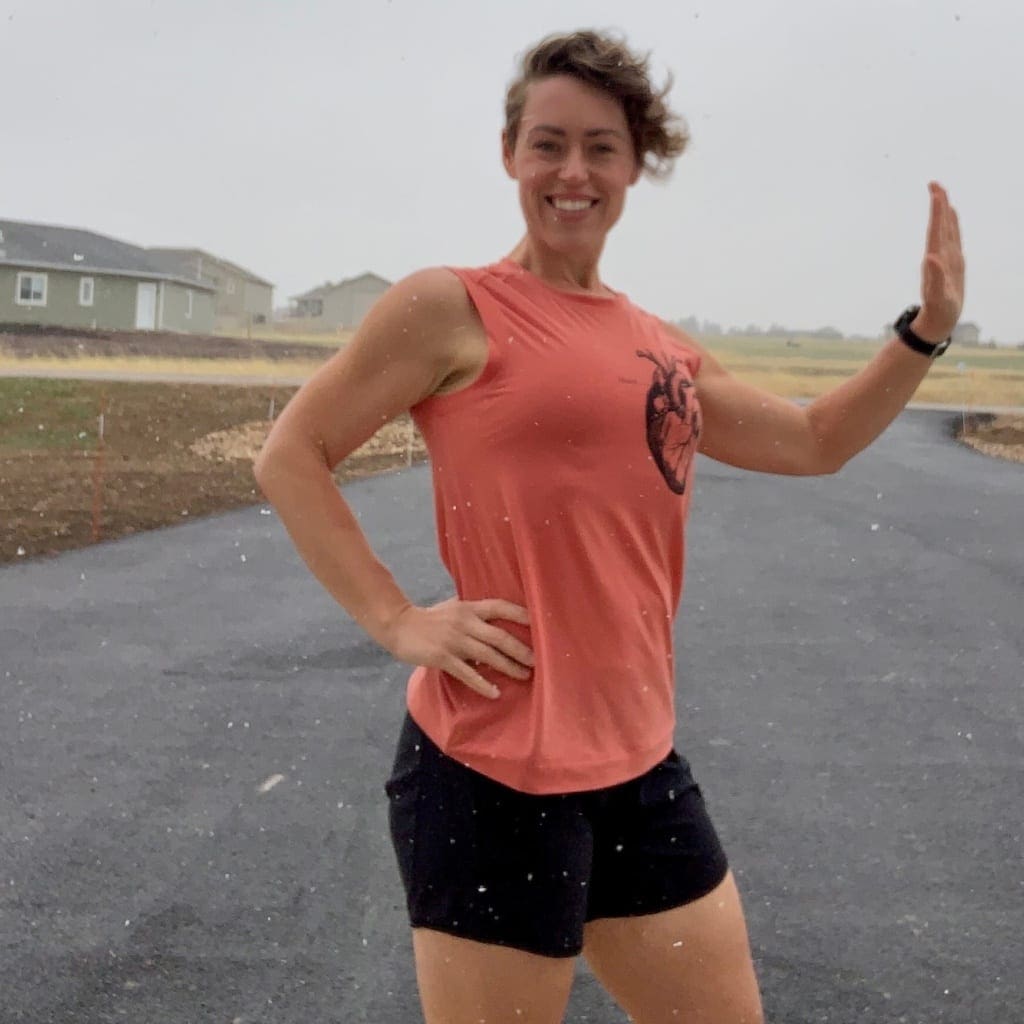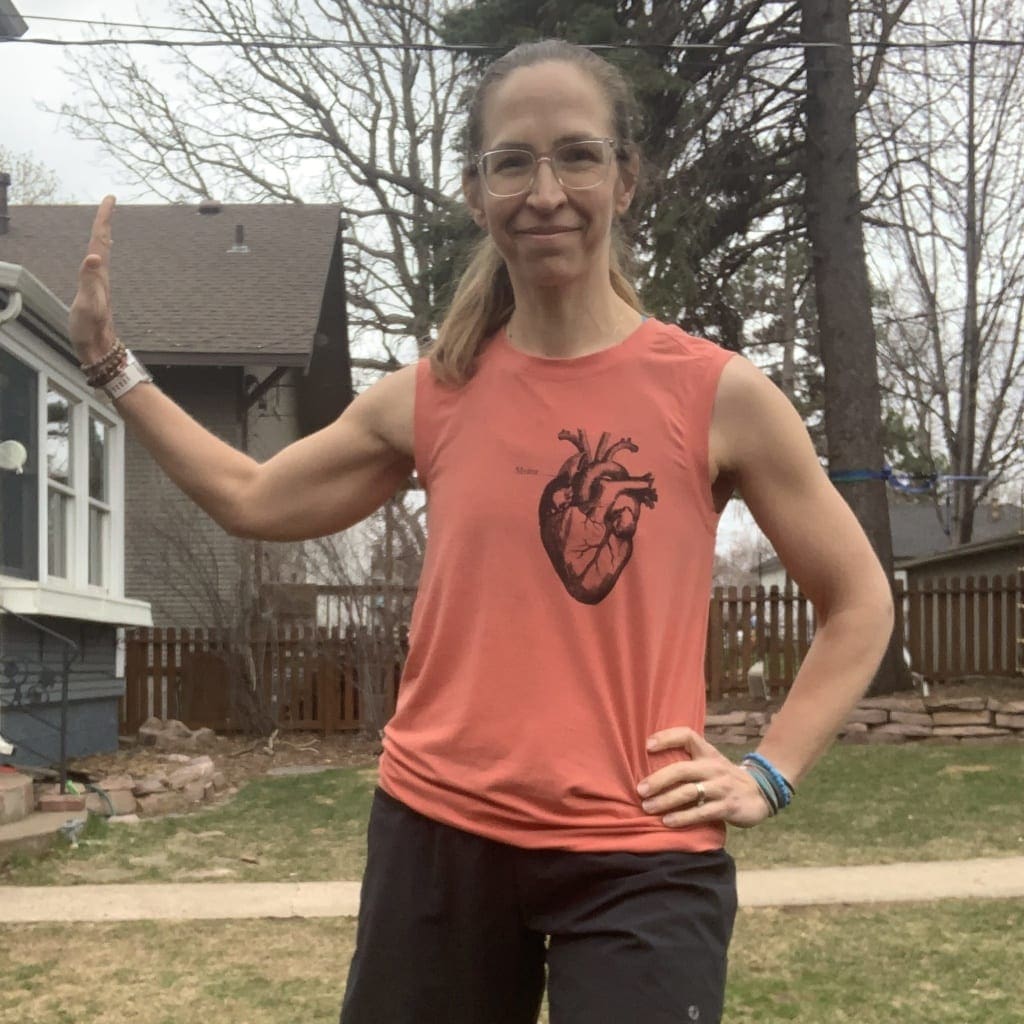AMR Answers #65: Avoid Burnout; Run or Strength Train First?
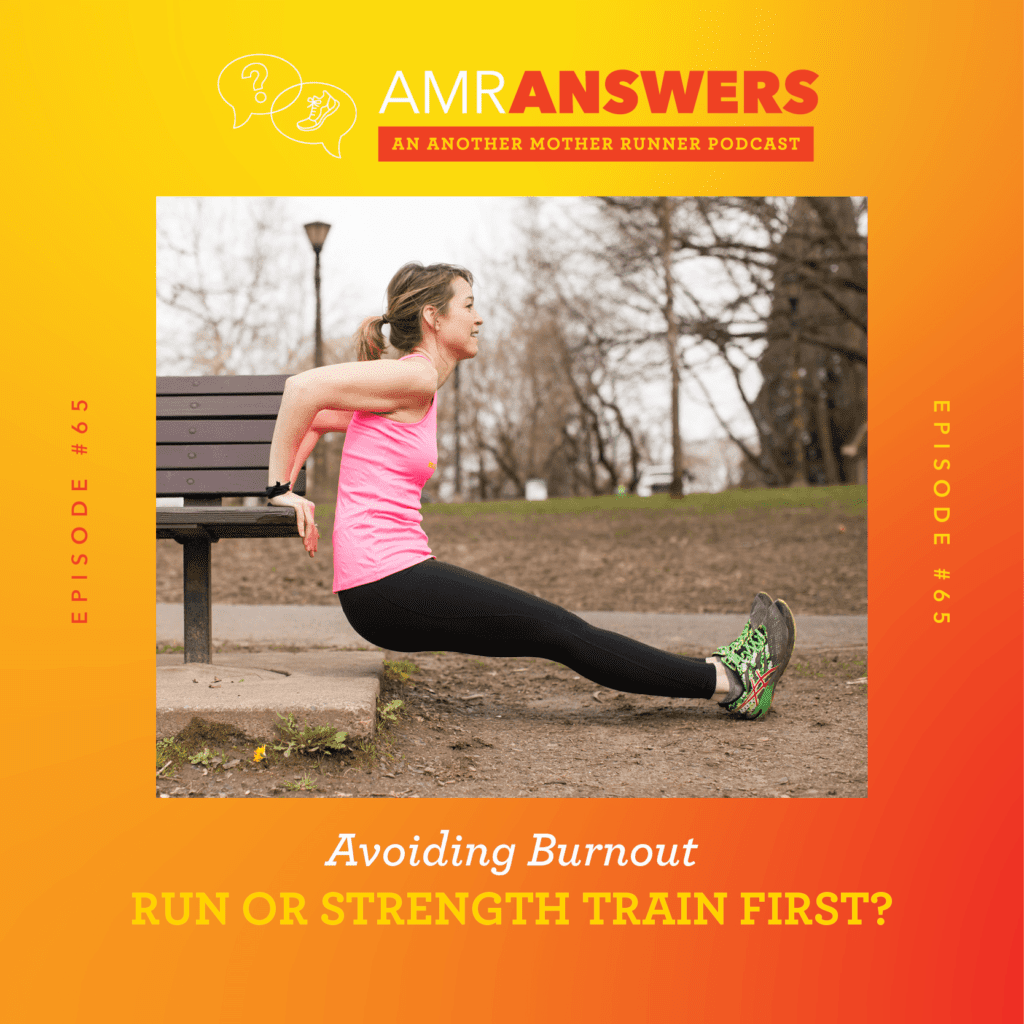
Sarah and Dimity tell:
-Tori the ways to determine whether to run or strength train first;
-Julia how to beat training plan burnout; and,
-city-dwelling Elena how to protect herself from airborne pollutants.
Sarah details her delightful run-swim-brunch-museum Sunday with Molly, which launches Dim + SBS on a few laugh-filled tangents.
When you shop our sponsors, you help AMR.
We appreciate your—and their—support.
Get your Brit on: Try Acorn TV and get
your first 30 days free by going to Acorn.TV and using code AMR
To order 36 sorbet roses for $36, go to
1800Flowers.com, click the radio offers icon, and enter code amr
Need more answers? Check out more episodes!
AMR Gears Up: Green Gear
Best Green Gear: the next edition of Another Mother Runner Gears Up. We have #motherrunners—put key running gear to the test, then deliver the results so you can grab the gear that works best for your running and body.
AMR Gears Up: Green Gear
By Allison Pattillo
The next time you’re shopping for new running gear, read the sustainability pledge on the website of your favorite brand – chances are they have one. Sometimes they may be on the top bar of the home page, and for other brands you may have to do some scrolling. While sustainability efforts vary widely, the good news is that for running gear, making less of an impact on the environment is becoming the new normal.
In honor of Earth Day, we wanted to find out more about these green initiatives and where the industry was going. One thing that’s obvious is it’s no longer enough to focus solely on how gear performs, it’s time to start thinking about how it impacts the planet as well. Thankfully, as you can see from these highlights, your favorite brands are making impressive strides (pun intended!), with many using 2025 as a benchmark year for bigger initiatives.

Since it was founded in 1992, prAna has centered around the concept of “Clothing for Positive Change.” In fact, the first orders were shipped out in recycled produce boxes from the grocery store! Their goal is to have 100% of their products be made from their “preferred fibers,” including recycled fibers, fibers made from sustainable and regenerative trees and organic fibers) by 2025. They are also focused on keeping products in circulation through The Renewal Workshop. And they have also pledged to eliminate plastic from consumer packaging by the end of 2021 as part of their Responsible Packaging Movement.

Wool is another Earth-forward fabric choice championed by brands like Icebreaker and Smartwool that focus solely on wool and many others that include it in their line (like Tracksmith, Oiselle, lululemon and Athleta, which is also B Corp Certified). Smartwool is reducing their carbon footprint from producers that farm the wool all the way to the customer (there will be zero single-use plastic in their packaging by 2025) with a goal of 100% circularity and climate-positive wool by 2030. They just launched a sock take-back program called the Second Cut Project. Socks collected in this first phase will be repurposed as filling for dog beds which will be available for purchase the 2021 holiday season. All Icebreaker fibers will be plastic-free by 2023, as of 2020 they were at 87%. Another fun fact is that since 2010, customers have been able to trace the fiber used in their clothing all the way back to the farm…. they call it a “baacode.”
In addition to offsetting emissions from business travel, commuting, athlete expeditions and The North Face (TNF) owned and operated facilities, TNF is committed to further reducing its carbon footprint. That extends to using recycled plastic fibers where possible, working to find environmentally preferable options to DWR chemicals and partnering with Bluesign Technologies to reduce the impact of their mills. As for their products already in existence, The North Face Renewed program offers refurbished gear for sale, while their Clothes the Loop initiative accepts used TNF gear and donates it to Soles4Souls.
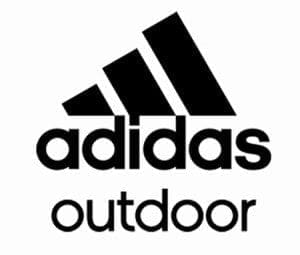 Adidas is incorporating recycled plastics into their shoes and apparel and has also committed to using 100% recycled polyester in their products by 2024. Check out their Primeblue collection made in part with Parley Ocean Plastic—that’s right, you too can be part of the solution by wearing a garment made from recycled ocean plastics. Pretty cool, right? Their Primegreen line is made from recycled materials and contains no virgin plastics.
Adidas is incorporating recycled plastics into their shoes and apparel and has also committed to using 100% recycled polyester in their products by 2024. Check out their Primeblue collection made in part with Parley Ocean Plastic—that’s right, you too can be part of the solution by wearing a garment made from recycled ocean plastics. Pretty cool, right? Their Primegreen line is made from recycled materials and contains no virgin plastics.
Look to Saucony for either recycled or more sustainable fabric in almost their entire apparel collection. As for shoes, by fall of this year every style in their performance collection will incorporate recycled content. Their eventual goal is eliminating virgin plastics from all their products. Saucony also joined prAna’s Responsible Packaging Movement to take their efforts towards lower-impact packaging to the next level. Since little things make a big difference, the hang tags on their products are made from 80% post-consumer waste, and their performance shoe boxes range from 85 to 100% recycled paper. Their Jazz Court RFG shoe is made with only seven natural products and no plastic. Plus, it looks sweet.
Thanks to a years-long effort by the team at Salomon, their new Index.01 road shoe is completely recyclable. As of the winter 20/21 season, all their running and hiking shoes are PFC- or PFC EC-free. And, they have a library of how-to videos on their website to learn how to clean and care for gear to make it last longer.
Brooks, New Balance, Hoka One One and Nike are all making strides in product sustainability, reducing greenhouse gas emissions and responsible sourcing. The New Balance Green Leaf label indicate products made with 50% or more recycled or organic content. Columbia has a ReThread program where old shoes and gear can be taken to their stores to be repurposed and recycled.
For clothing made of recycled plastic bottles, we are big fans of the Headsweats Repreve line. We tested the Eco Women’s Long Sleeve and the ECO Core Singlet and found both to be soft and comfortable.
A relative newcomer, Outdoor Voices has incorporated environmentally forward practices from the start, including product circularity and packaging made only from recycled and recyclable materials. Newer initiatives include moving towards more sustainable materials throughout the collection, launching a product take-back and repair program, eliminating all waste from community events (they currently have eliminated all single-use plastics at events) and incorporating sustainable elements in new brick-and-mortar builds.
Check out all of the AMR Gears Up columns here!
Did we miss your green company?
Let us know in the comments below!
#465: Boston Marathon Memories
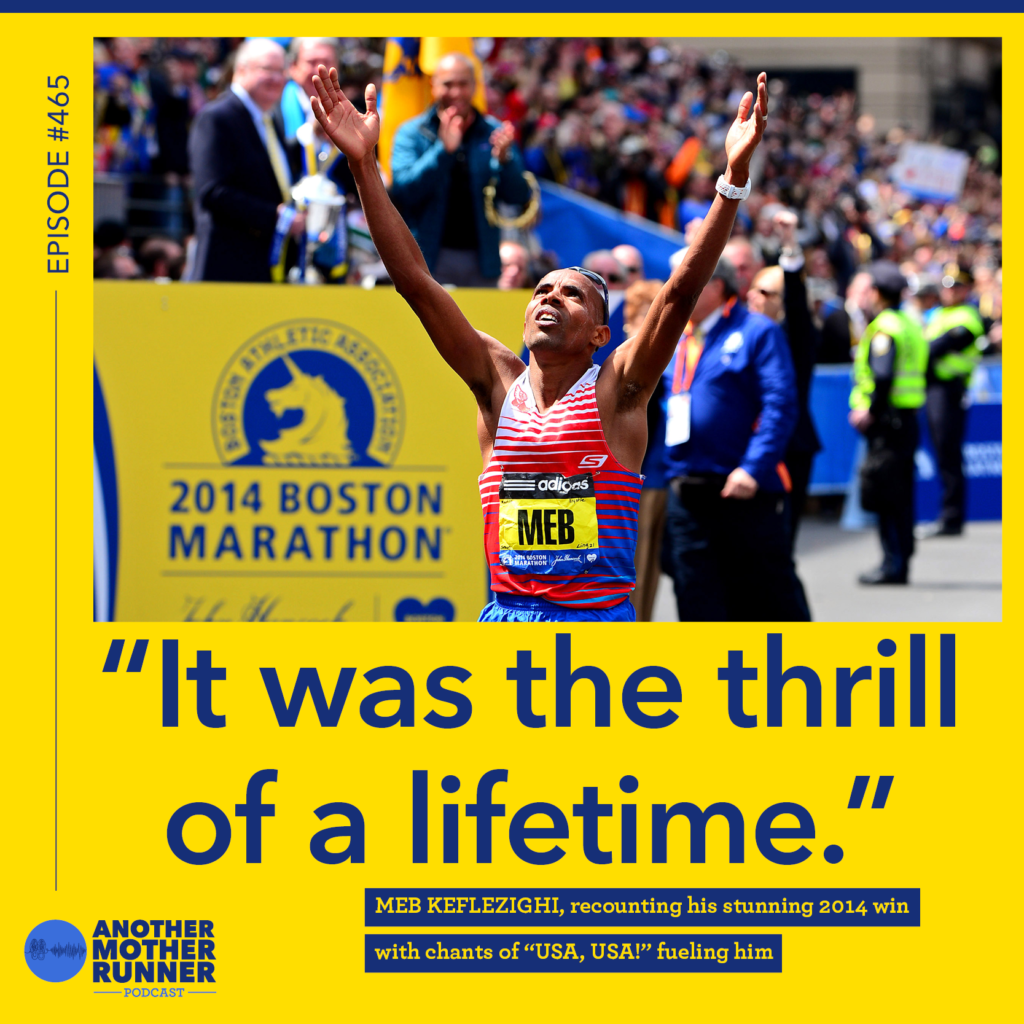
Sarah goes it solo for this tribute to a race that isn’t happening on Monday: the Boston Marathon. She serves up a dozen clips from past guests, recounting their experiences at the venerable marathon, from volunteering at the expo to winning the whole dang thing! Listen to:
-Meb Keflezighi recount “the thrill of a lifetime,” winning in 2014;
-Kathrine Switzer detail her near “take-down” on the course in the then-all-male race;
-the oldest-ever female finisher tell what kept her returning every year;
-a BAMR describe the unsurpassed crowd support that propelled her to a 20-minute PR; and,
-Bethany relay her hilarious (and slightly horrifying!) birth-a-tampon story.
When you shop our sponsors, you help AMR.
We appreciate your—and their—support.
Step up to a NordicTrack treadmill:
Explore all the options at NordicTrack.com
Stress less. Live better. Enjoy 40% off
a Calm Premium subscription at Calm.com/amr
Self-care shave essentials from Flamingo
for just $16 with free shipping at shopflamingo.com/amr
Best Running Friends: Long Distance + Still Running Strong
by Heather Reed
If you have a best running friend—or BRF, as we call them around these parts—you know that simple three-word phrase is not enough to encompass the meaning of the relationship.
Best running friends share dedication, confessions, whining, sugar, sweat, discomfort, gas, periods, secrets. The intimacy is boundless—and you kind of wish the miles together could go on forever…if your legs could hack it and your families wouldn’t miss you.
Like all friendships, however, BRFs can hit speed bumps. And Heather and Christine, two BRFs, hit a big one when Christine’s family moved across the state of South Dakota during the pandemic.
The two still are in a synced stride, though; here’s a sweet story of how their BRF-dom started, and how they’re keeping it running strong.

BECOMING BEST RUNNING FRIENDS (BRFS):
Heather: When I had my third child, I took a sabbatical from teaching and worked part-time at a local natural parenting store. Christine would come in wearing baby-wearing wraps and cool running t-shirts. She was so beautiful, smart, and fit. I wanted to be like her!
We were both obsessed with babywearing and bonded right away. When she casually suggested I train for a 10K with her, I knew it was my chance to level up and be more like Christine.
Christine: I had my second daughter in 2015 and began to train for my first ever half marathon in the spring of 2016. When I began to ponder a fall 10K that same year, I posted on Facebook asking if any of my friends wanted to join in on the fun.
The transition from mere friends into BRFS began! As we put in the training miles, we talked about our babies and older kids, the lack of sleep, our partners and parents, podcasts, nutrition, and of course, running. In October of 2016, we crossed the 10K finish line together: a feat we’d repeat many times to come.

STRENGTHENING THE BRF BONDS:
Unsurprisingly, the 10K wasn’t enough. (Runners will be runners, after all.) We trained together for a half marathon the following spring, and then kept racing. Most weekends included a long run/therapy session which solidified our bond. We are two million percent comfortable with each other and zero facades.
It’s no wonder. Being the information nerds that we both are, we geeked out over a podcast that explained the therapeutic value of talking while running. There are actual therapy practices built around this concept; of course we feel amazing after having run together.
In 2019 we took to the next level, running the Lean Horse 20 miler side by side. We then formed a Ragnar team that fall, dragging our husbands into our special flavor of crazy, and had the best weekend on some amazing trails in Wisconsin.
BRF IN JEOPARDY
Christine: During the pandemic, when I learned we were moving from southeastern South Dakota to northwestern South Dakota, my heart sank. Besides moving away from family, I was deeply saddened at the thought of no more regular runs with Heather. Our friendship thrived on long distance running, but could it handle simple long distance?
Heather: We spent months in denial and shed plenty of tears. Even though Christine is now a six-hour drive away, we’re as close as ever.
But it doesn’t come without effort.
MAINTAINING A LONG-DISTANCE BRF: TIPS FROM THE SOUTH DAKOTAN PROS

1. Plan all the races together, with all manner of irrational decision making welcome.
[text conversations]
Heather: Want to run across the state of Tennessee (1035K) in the four hottest months of the year?
Christine: Sounds crazy. Send me the link!
Heather: Want to run the Yeti Challenge to get to 50K: 5ish miles every 4 hours for 24 hours?
Christine: Oh! The medal is cute! Send me the link!
Christine: Help! I need someone to help me get through a 20-mile training run.
Heather: I’m not at all prepared, but why not? I’ll run beside you until I cannot.
2. Be honest about missing your best running friend.
Heather: One thing that I appreciate about our relationship is that we can both be honest and vulnerable with each other about how much we love each other. Lots of emojis, lots of warmth, and yes, a little cheese. When you’re far away from each other, a virtual SWAK can ease your heart.
3. Prioritize all kinds of connection.
Christine: We call each other during long runs and chat using our bluetooth headphones. And nearly every time I travel back to Sioux Falls, we make it a point to connect for a run, coffee, dinner or even just a quick in-person chat.
4. Try something new together.
Christine: Last summer amidst the pandemic, we both found ourselves feeling a little fluffier than we were comfortable with (#twinning in all the ways). After many chats, we decided to pull the trigger on joining a nutrition program. We celebrate each other’s victories and commiserate over the lows. It has been a fun new challenge like taking on the next race distance together yet again.
5. Bond over all the running gear.
Heather: Who doesn’t love running candy—our shared phrase for running nutrition like Gu—and running clothes? We are constantly sharing info for gear sales, chatting about styles, and taste-testing snacks.
I love it when she texts me pics of her new favorite shorts or gives a new flavor five stars–then I know I’ll love them too.
Thankfully, the connection of BRFs are not easily broken. The move made us both nervous we would lose a part of our friendship, but the miles together have built a solid foundation that distance cannot break. To say we’re sole/soul sisters is exactly right.
What are your tips for keeping up with long-distance Best Running Friends? Lay ’em on us!
#463: The Practical Science of Breathing
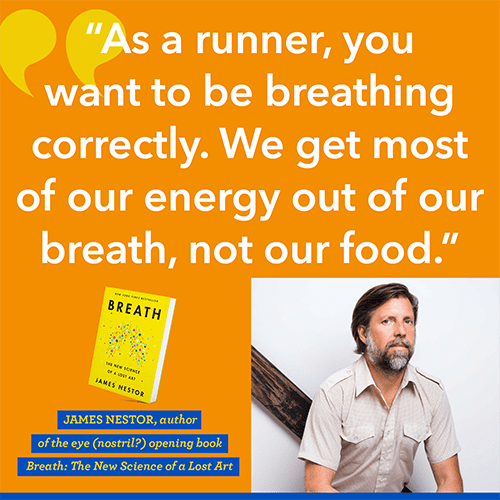
Sarah and Coach Amanda take a breather with James Nestor, author of the fascinating book Breath: The New Science of a Lost Art. In this eye- (nose?!) opening conversation, James details:
-the astounding negative effects of breathing in an abnormal way;
-the power of breathing through your nose, not your mouth;
-how to (slowly) morph into a nasal breather while running;
-solutions for side cramps; and,
-insightful breathing advice for asthmatics.
When you shop our sponsors, you help AMR.
We appreciate your—and their—support.
Show Mom you care:
Get $10 off your first purchase at Storyworth.com/amr
Check out all the amazing shoes, bags, and masks
available right now at Rothys.com/amr
Relight your spark:
Get a 30-day free trial at DipseaStories.com/amr
AMR Trains #30: Resiliency: Running after a Hip Replacement and a Rheumatoid Arthritis Diagnosis
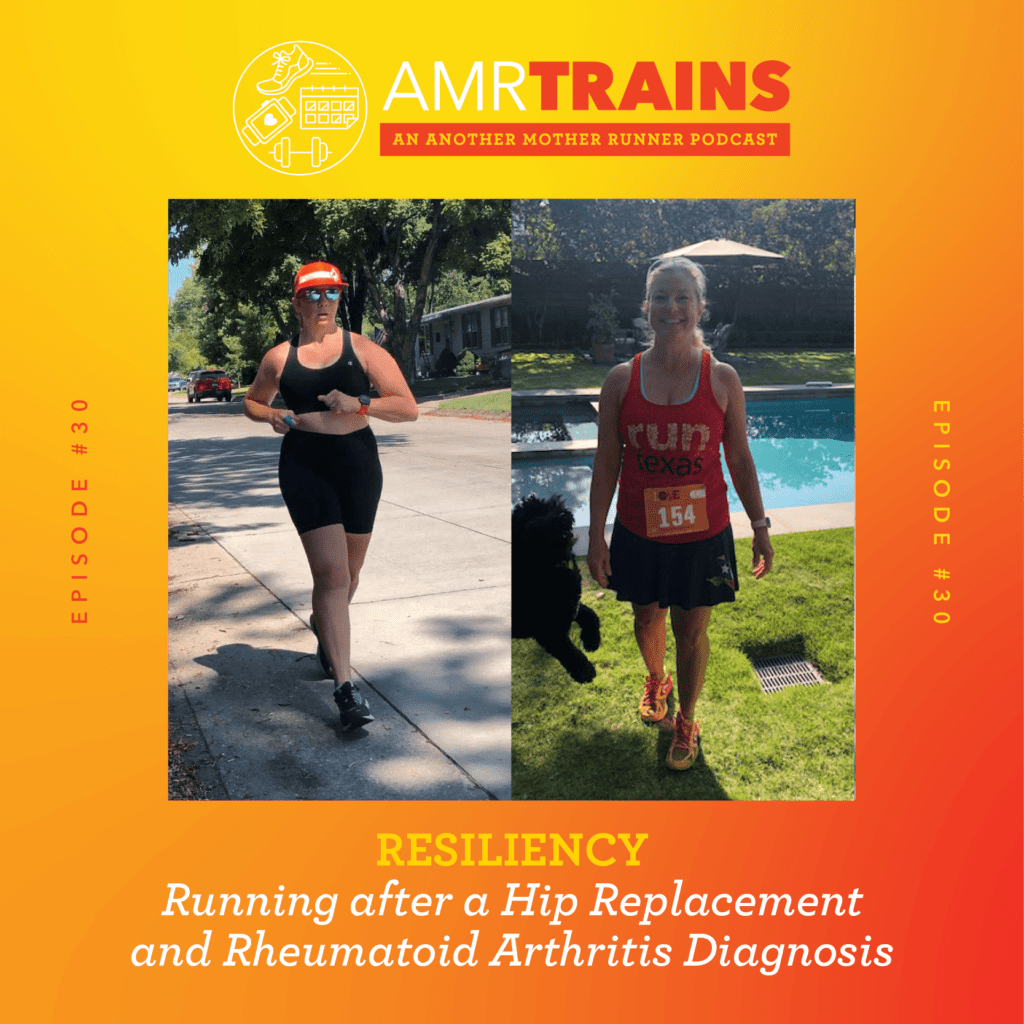
If you’ve spent too much time wondering what you’d do if running were no longer an option, this episode is for you.
Dimity chats with two women who have overcome significant hurdles and found their way back to running. First up is Kathe Pate, who has had hip surgery, a hip replacement, and will soon have a knee replacement; she plans on moving forward for years to come.
Chasing that dose of motivation is Lindsey McRoberts, who was diagnosed with rheumatoid arthritis during the pandemic; she’s currently training for Grandma’s Virtual Half Marathon.
Tune in to listen to their inspiring stories—and perhaps tweak your own perspective.
When you shop our sponsors, you help AMR.
We appreciate your—and their—support!
Make your lawn enviably green:
Get $20 off your custom lawn plan at GetSunday.com/amr
Start living a happier life today:
Get 10% off your first month at betterhelp.com/amr
Ready for more Training? Steaming hot episodes served up here.




